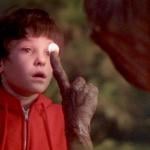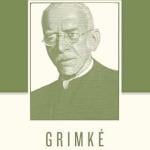I have always liked the letter M. The M volume was my favorite of all the World Book Encyclopedia volumes, for it contained both “Mythology” and “Motion Pictures”. M is also the first initial in the first names of both my sisters. And it is the first letter of the last three films I saw that I have not blogged yet.
A couple nights ago the wife and I watched Munchhausen (1943), the film that Nazi propaganda minister Joseph Goebbels commissioned in order to prove that the Germans, as enmeshed in the war as they were, could still produce sumptuous, colourful epics to rival the productions of Hollywood. In this, he succeeded; what’s more, because the film has a certain sexual frankness (Munchhausen sneaks away for a tryst with Catherine the Great, topless women frolic in the Sultan’s harem, etc.), it’s possible the international audiences of its day might have found the film even more impressive than the somewhat more constrained American films of that time. And thankfully, there is virtually nothing of the Nazi ideology in this film, beyond one or two relatively harmless references to the “fatherland,” so modern audiences can enjoy it without all that other baggage. FWIW, I have never read the original Munchhausen legends, but I recognized a number of story elements from the 1988 Terry Gilliam film (which, incidentally, I have not seen in years, though I was once quite a fan) — the King and Queen of the Moon with the detachable heads, the man who runs extremely fast, etc. — and I was impressed by how convincing some of the special effects were in this much older film. I also liked that servant of the Sultan whose only job is to swing a pendulum, count the seconds, and tell time; he’s a human clock. Definitely worth a look.
Then, Robert Altman’s McCabe and Mrs. Miller (1971) — look, three M’s! — which I have wanted to see for some time because it was one of the first major Hollywood films to be made in the Vancouver area, thus paving the way for today’s much-vaunted “Hollywood North”. (Mike Nichols’ Carnal Knowledge, with Jack Nicholson and Art Garfunkel, was also made here around that time.) I like seeing Warren Beatty in films that were made before he began acting as his own writer and producer and director, and Julie Christie is great as the Cockney bordello madam who knows exactly what her clients want and how to treat her whores right — the scene where she critiques Beatty for his ignorance and lack of class in such matters is a hoot. There’s also a very nice winter-y feel to this film, in scenes like the one where a guy throws a jug out onto the ice and then shoots around it to make the jug float, or in the final scenes, as Beatty plays cat-and-mouse with his would-be killer in the snow. Could be worth seeing again.
And then, last night, Moolaadé (2004), Ousmane Sembene’s deservedly lauded film about so-called female circumcision, and a woman who offers sanctuary to four girls who are fleeing such a ritual. The woman invokes an ancient spell to give power to her offer — the men dare not risk the curse that would fall on them if they were to enter her house and take the girls away — and it is interesting to see how everyone insists on the necessity of following their ancient and basically pagan traditions even as they try to justify those traditions in the light of their community’s conversion to Islam some centuries ago.
Interestingly, technology and the mass media are presented here as forces of enlightenment, though not necessarily at odds with religion: early on, a man says he wants to listen to the Koran on the radio; later, the men blame the woman’s rebellion on her radio, and so they round up and destroy all such devices; near the end, the woman boasts that she heard the grand imam say on the radio that female circumcision is not mandated by the Koran; and the last two shots in the film are that of an ostrich egg perched atop the mosque, followed by a similarly-angled shot of a TV antenna. (Has the antenna supplanted the mosque? Or does it supplement it?) This is a striking contrast to a lot of other films, which tend to portray such modernizing, globalizing forces as a problem that small, isolated villages would be better off without.
I am also struck, once again, by the very different rhythms of African life, as seen in the handful of African films that I have watched, and the way the villagers meet and greet each other through some fairly elaborate rituals; I was particularly reminded of Cheick Oumar Sissoko’s Genesis (1999), an Africanized version of the Bible, in which characters ritualistically recite the stories of their communities and the lineages of their ancestors; nothing in Moolaadé is quite that extensive, but there is a parallel in the formality of the characters’ social interactions.
And lastly, as one who got married just weeks ago, and as one who recently saw the documentary Inside Deep Throat — in which we learn that apparently one of the legal arguments brought against that famous porno flick by the prosecution was that it might give women the erroneous idea that clitoral orgasms are as valid as vaginal orgasms — I have to say I really, really don’t see why anyone would object to that part of the female anatomy. Why would American prosecutors expect any court of law to care? And why would the men in this tiny African village want their women to go without that kind of sexual pleasure? One of the very few potential drawbacks to Moolaadé is that we never hear anyone make any argument as to the reasons for female circumcision, beyond a repeated assertion to the effect that that’s just the way it has always been done, and therefore women who are not “cut” are less likely to find husbands. If the villagers have actual reasons for this practise — any awareness as to why their ancestors took it up — the film never lets us hear them. But then, I guess it’s always possible the villagers don’t have any reasons, which, itself, would be a part of the problem that needs depicting.












